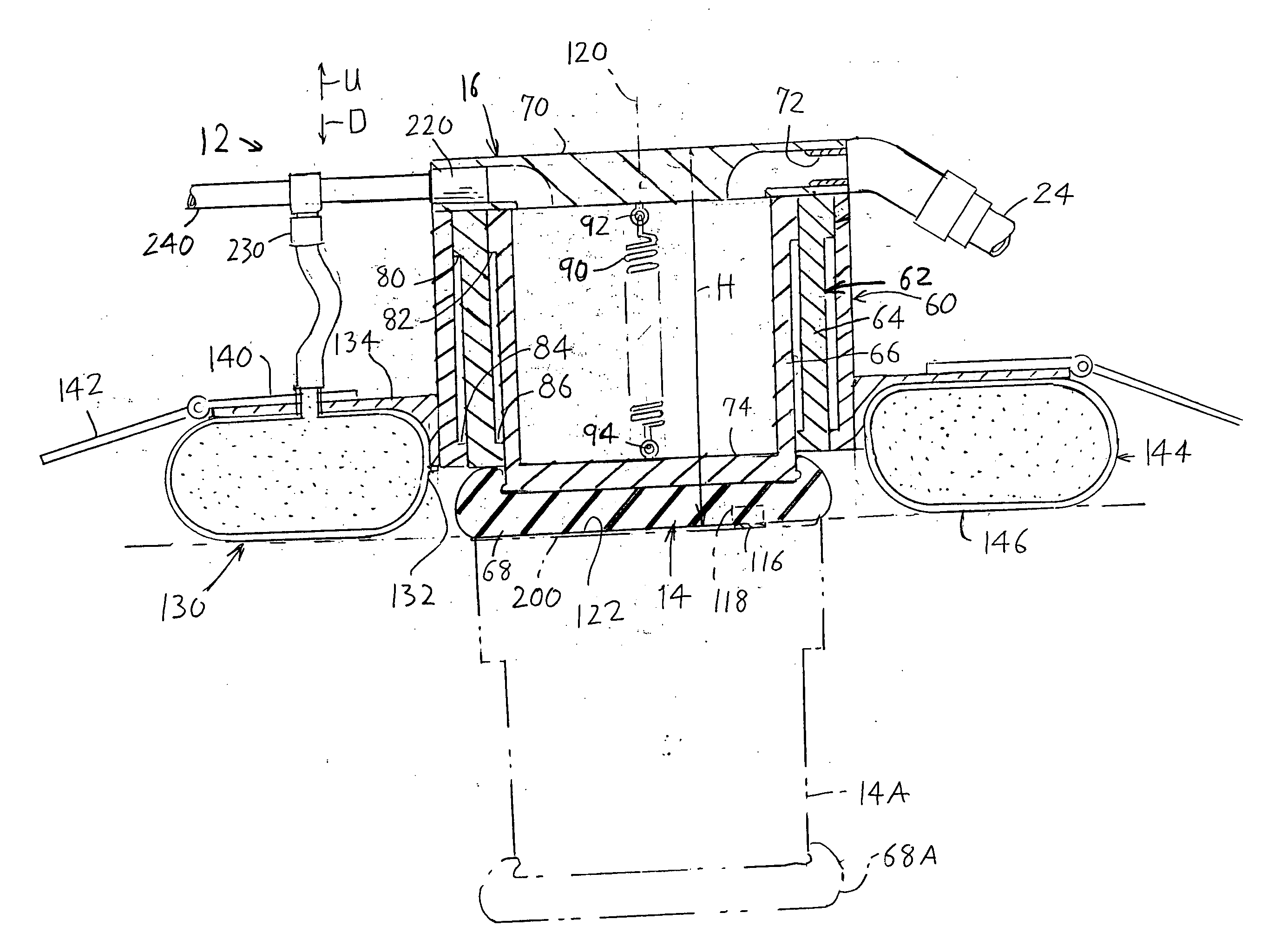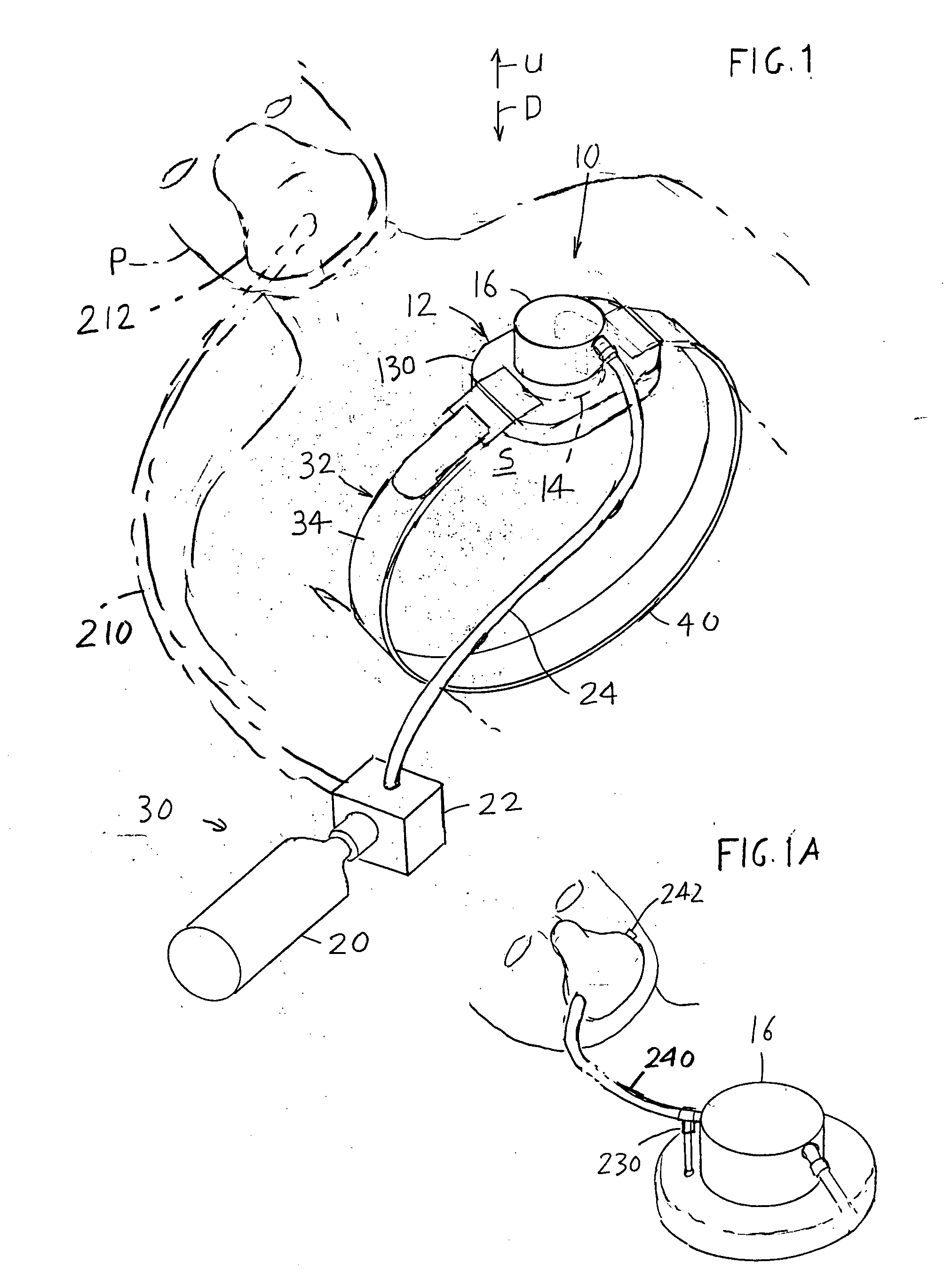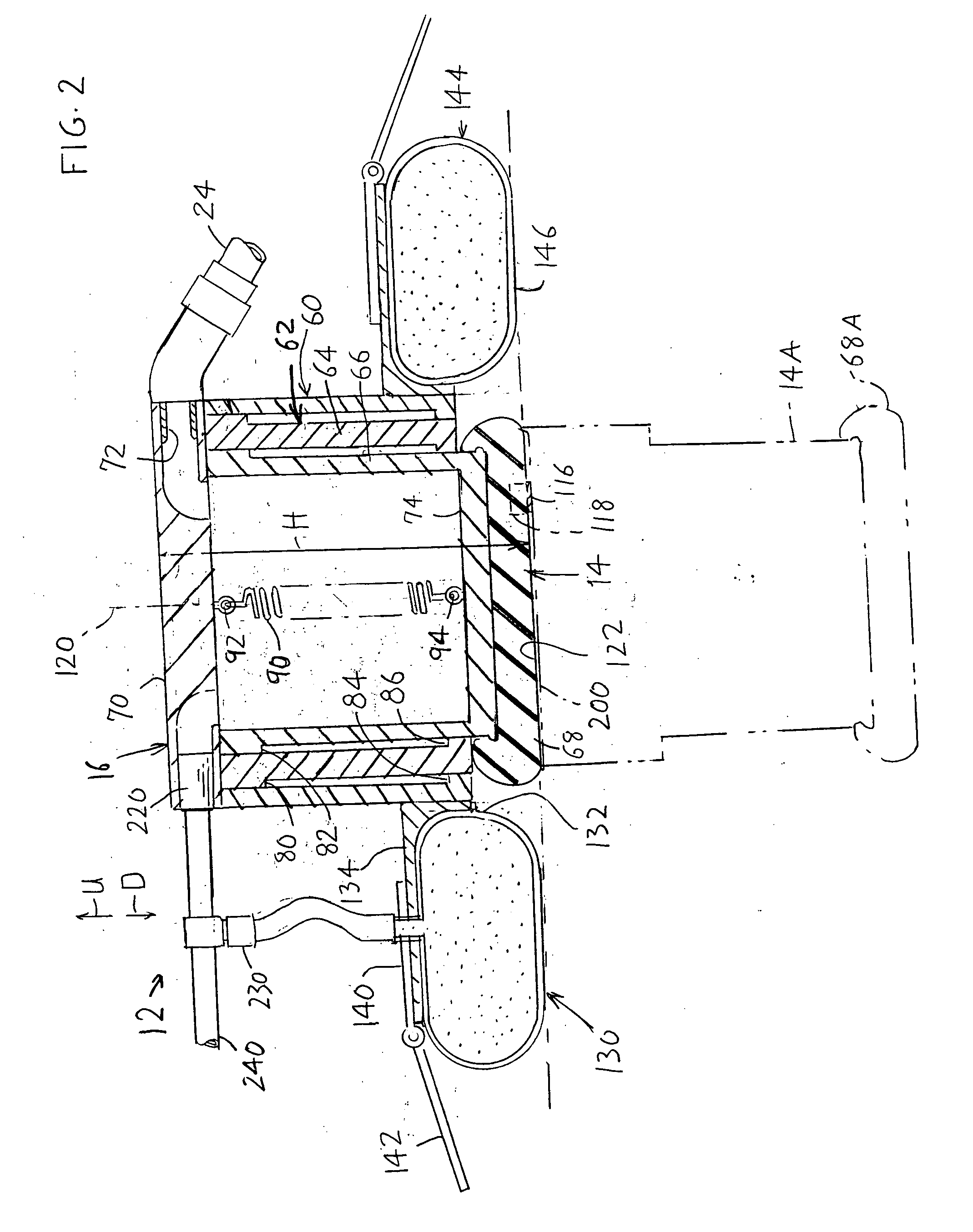Controlled chest compressor
a chest compression and compressor technology, applied in the field of controlled chest compression, can solve the problems of ineffective and reliably applied for long periods of time, and help achieve the maximum effect of the patient's circulation and breathing, reducing or eliminating any load, and stimulating circulation
- Summary
- Abstract
- Description
- Claims
- Application Information
AI Technical Summary
Benefits of technology
Problems solved by technology
Method used
Image
Examples
Embodiment Construction
[0015]FIG. 1 illustrates a patient P who has dangerously low blood circulation such as might occur in a heart attack. An apparatus 10 of the invention includes a compressor assembly 12 with a reciprocating member 14 having a diameter of about 3 to 4 inches, which can be forcefully pushed down against the sternum S of the patient's chest in a series of regular pulses. The chest compressions stimulate the heart of the patient, which may cause a stopped heart to start again. The compressions also cause some circulation of blood, and also cause some breathing of the patient to supply oxygen to the bloodstream. For an adult male patient, depressing member 14 can press down with a maximum force of about 100 to 120 pounds, in pulses spaced by perhaps ½ to 1 second apart. The period of each cycle is no more than about 1 second (i.e. less than two seconds). This mimics the chest compressions applied manually in CPR (cardiopulmonary resuscitation). For a child, the force is lower. The downwar...
PUM
 Login to View More
Login to View More Abstract
Description
Claims
Application Information
 Login to View More
Login to View More - R&D
- Intellectual Property
- Life Sciences
- Materials
- Tech Scout
- Unparalleled Data Quality
- Higher Quality Content
- 60% Fewer Hallucinations
Browse by: Latest US Patents, China's latest patents, Technical Efficacy Thesaurus, Application Domain, Technology Topic, Popular Technical Reports.
© 2025 PatSnap. All rights reserved.Legal|Privacy policy|Modern Slavery Act Transparency Statement|Sitemap|About US| Contact US: help@patsnap.com



